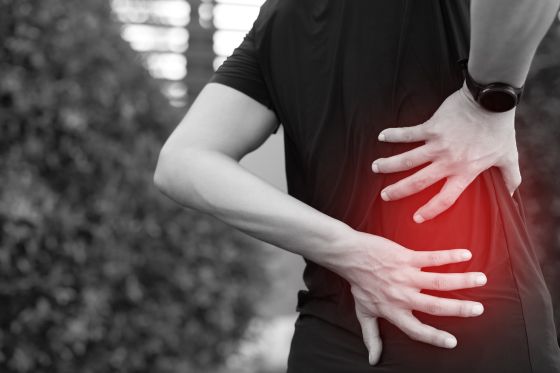Back pain is something that nearly everyone will experience at some point in their lives.
It’s one of the most common complaints and can range from a minor nuisance to a debilitating condition.
But when back pain strikes, many people turn to the internet or rely on advice from well-meaning friends and family.
The result? They end up playing “Back Pain Doctor” for themselves.
While it’s great to be proactive about your health, it’s essential to recognize that relying on myths and misinformation can do more harm than good.
The Dangers of Being Your Own Back Pain Doctor
Myth 1: Rest is Best for Back Pain
One of the most persistent myths about back pain is that you should rest and avoid all physical activity.
While it’s true that rest can be beneficial in the immediate aftermath of a severe injury, prolonged inactivity can actually make your back pain worse.
Consequences:
- Muscle Weakness
Extended periods of rest can lead to muscle atrophy, making your back weaker and more susceptible to pain.
- Stiffness and Reduced Mobility
Lack of movement can cause your muscles and joints to stiffen, reducing your overall flexibility and making it harder to perform everyday activities.
- Delayed Recovery
Without movement, the blood flow to your back decreases, slowing down the healing process.
Myth 2: All Back Pain is the Same
Another common misconception is that all back pain is the same and can be treated with a one-size-fits-all approach.
However, back pain can have various causes, including muscle strain, herniated discs, arthritis, or even underlying health conditions.
Consequences:
- Misdiagnosis
Treating all back pain the same way can lead to misdiagnosis and ineffective treatment, prolonging your discomfort.
- Ignoring Serious Conditions
Some back pain can be a symptom of more severe issues like kidney stones or infections. Assuming all pain is muscular can lead to ignoring these conditions.
Myth 3: Pain Medication is the Best Solution
While over-the-counter pain medication can provide temporary relief, it’s not a long-term solution for chronic back pain.
Relying solely on medication can mask the symptoms without addressing the root cause.
Consequences:
- Dependence
Overuse of painkillers can lead to dependency and potential side effects, including gastrointestinal issues or kidney damage.
- Delayed Diagnosis
Masking the pain with medication can delay proper diagnosis and treatment of the underlying cause.
The Importance of Seeking Professional Help
Trying to be your own Back Pain Doctor can lead to a cycle of chronic pain and ineffective treatments.
Instead, seeking professional help from a qualified physical therapist or healthcare provider is crucial for proper diagnosis and treatment.
Benefits of Professional Guidance:
- Accurate Diagnosis: A professional can determine the exact cause of your back pain through a thorough examination and appropriate imaging tests.
- Personalized Treatment Plan: Based on your diagnosis, a tailored treatment plan can address the specific cause of your pain and help you recover more effectively.
- Preventative Care: Professionals can provide guidance on preventing future back pain through exercises, posture correction, and lifestyle changes.
Tips for Back Pain Relief
While professional guidance is essential, there are several steps you can take at home to alleviate back pain and prevent it from recurring.
1. Stay Active
Engaging in regular, low-impact exercises like walking, swimming, or cycling can help keep your back muscles strong and flexible. Avoid prolonged periods of inactivity.
2. Practice Good Posture
Maintaining proper posture while sitting, standing, and lifting can reduce the strain on your back. Use ergonomic furniture and be mindful of your body mechanics.
3. Stretch Regularly
Incorporate stretching exercises into your daily routine to improve flexibility and reduce muscle tension. Focus on stretches that target your back, hamstrings, and hips.
4. Strengthen Your Core
A strong core provides better support for your spine. Include exercises that strengthen your abdominal and back muscles, such as planks and bridges.
5. Use Heat and Cold Therapy
Applying a heating pad or an ice pack to the affected area can help reduce inflammation and alleviate pain. Use ice for the first 48 hours after an injury, then switch to heat.
6. Stay Hydrated
Drinking plenty of water can help maintain the elasticity of your spinal discs, reducing the risk of disc degeneration and associated pain.
7. Get Enough Sleep
Ensure you’re getting adequate sleep on a supportive mattress. Proper rest is crucial for your body’s healing and recovery process.
8. Seek Professional Help
If your back pain persists or worsens, don’t hesitate to consult a healthcare professional. They can provide a comprehensive assessment and develop a treatment plan tailored to your needs.
Don’t let back pain dictate your progress.
Playing the role of your own Back Pain Doctor may seem like a cost-effective and convenient solution, but it can lead to more harm than good.
Myths and misinformation can delay proper diagnosis and treatment, prolonging your discomfort and potentially worsening your condition.
Instead, seek professional guidance to ensure you receive accurate diagnosis and effective treatment.
Free Discovery Visit at P3 Athletic
If you’re unsure whether your back pain is due to injury or just post-workout stiffness, it’s important to monitor your symptoms.
Normal muscle soreness should subside within a couple of days. If the pain persists or gets worse, it might be a sign of something more serious.
Reach out to us at 408-495-3743 or click HERE to request your FREE Discovery Visit today and take the first step towards a pain-free life.
We can’t wait to help you get back to living your best life!
Other Free Resources For Back Pain Treatment
Read Our Blog – How To Avoid Lower Back Pain From Lifting Weights
Read Our Blog – 5 Lower Back Workouts To Keep You In The Game!

